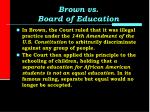
In contrast, about a fourth of white students (23.5%) attend schools where most of their peers are white and not poor, while only 3.1 percent of black children attend such schools.Ĭopy the code below to embed this chart on your website. While less than 1 in 10 white students (8.4%) attend high-poverty schools with a high share of students of color, six in 10 black students (60.0%) do. Figure C shows that a black child faces a very high probability of ending up in a school where a majority of her peers are both poor and students of color.

The known connection between race/ethnicity and poverty in the United States appears in data on the composition of schools attended by for black children.

Download image In America, race and poverty are intertwined, doubly disadvantaging black students Less than one in three white students (31.3%) attend a high-poverty school, compared with more than seven in 10 black students (72.4%).Ĭopy the code below to embed this chart on your website. (We refer to this group collectively as students of color hereafter.) In contrast, nearly seven in 10 black children (69.2%) attend such schools (see Figure A).Īs shown in Figure B, black students are also in economically segregated schools. These data show that only about one in eight white students (12.9%) attends a school where a majority of students are black, Hispanic, Asian, or American Indian. We use the most recently released data to describe school segregation and its consequences for math performance of eighth-graders. Black children are still relegated to separate and unequal schoolsįindings on school segregation and student performance come from the National Center for Education Statistics’ National Assessment of Educational Progress (NAEP), the most comprehensive study of education performance in the country. In contrast, when black students have the opportunity to attend schools with lower concentrations of poverty and larger shares of white students they perform better, on average, on standardized tests. It means that the promise of integration and equal opportunities for all black students remains an ideal rather than a reality.



 0 kommentar(er)
0 kommentar(er)
